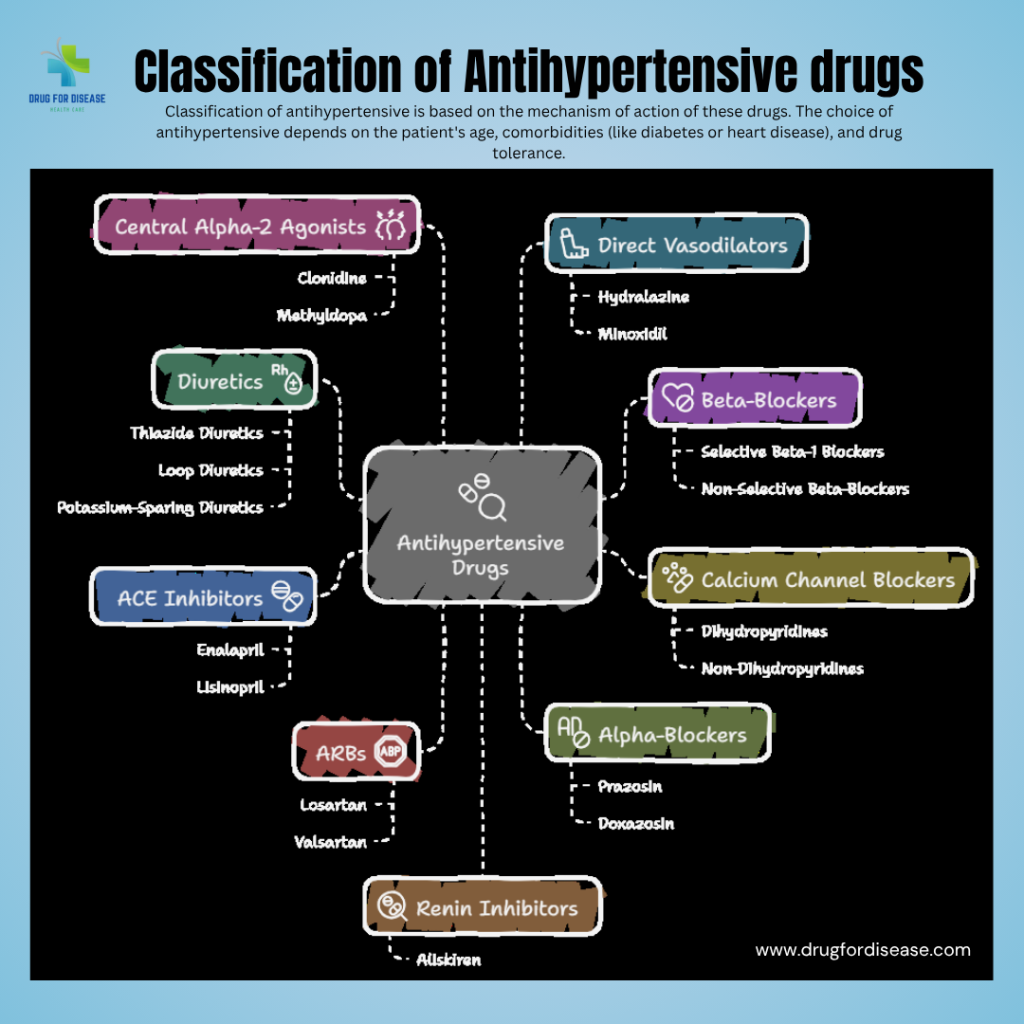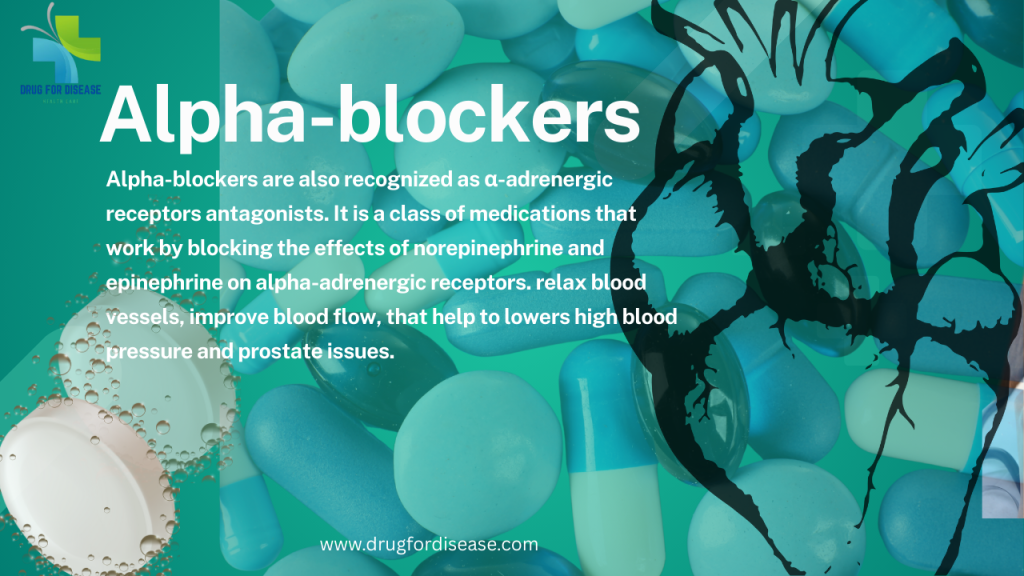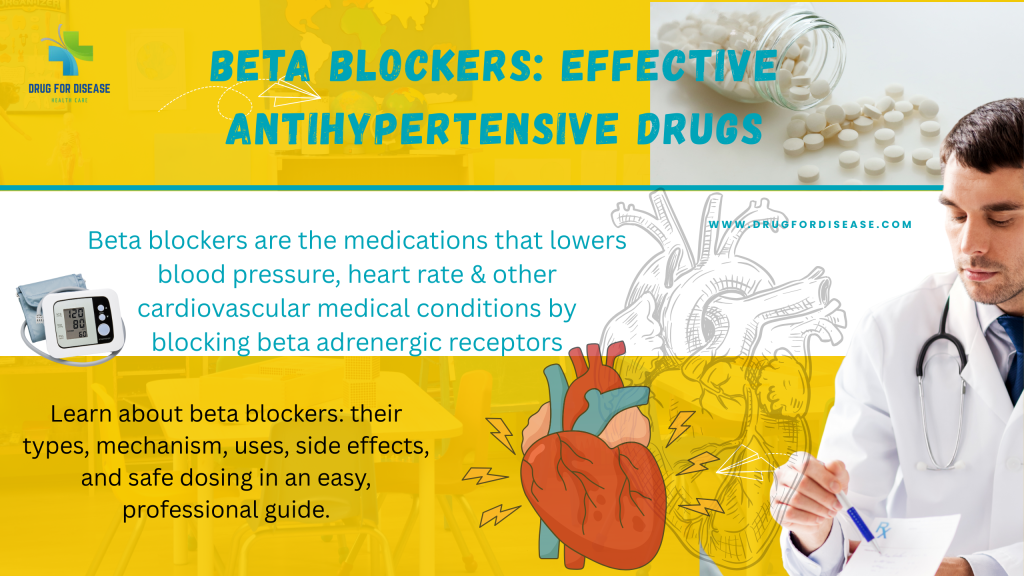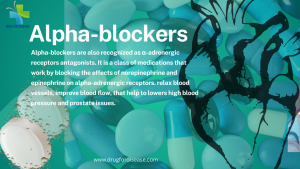Antihypertensive drugs are medicines that help to lower high blood pressure (hypertension). They employ diverse physiological approaches to control blood pressure and reduce the chances of complications such as heart attacks, strokes, and effects on kidney.
Classification of antihypertensive is based on the mechanism of action of these drugs. groups are as follow
1. Diuretics; also known water pills
Increased renal excretion of sodium and water—causes reduction in blood volume. increase excretion of sodium and water by the kidneys, reducing blood volume. Diuretics are are considered as first line treatment of hypertension.
Examples:
Thiazide Diuretics: basic site of action is distal convoluted tubule of the nephron. e.g. Hydrochlorothiazide, Chlorthalidone
Loop Diuretics; site of action is ascending loop of Henle. e.g. Furosemide
Potassium-sparing Diuretics; inhibit Na reabsorption at the collecting tubules. e.g. Spironolactone, Amiloride, Triamterene
2. Beta-Blockers (β-Blockers)
Decrease heart rate, cardiac output and ultimately lowers blood pressure.by blocking the effects of epinephrine and norepinephrine on beta-adrenergic receptors.
Examples: Atenolol, Metoprolol, Propranolol
3. Calcium Channel Blockers (CCBs)
Prevents movement of calcium into vascular smooth muscle, which leads to vasodilation and reduced heart contractility.
Dihydropyridines: mainly act on blood vessels and cause vasodilation. Amlodipine, Nifedipine
Non-dihydropyridines: Act on blood vessels and the heart & reduce heart rate and contractility. Verapamil, Diltiazem
4. Angiotensin-Converting Enzyme Inhibitors (ACE Inhibitors)
Mechanism: Suppress the action of a vasoconstrictor — angiotensin II by inhibiting the angiotensin-converting enzyme (ACE).
Examples: Enalapril, Lisinopril, Ramipril
5. Angiotensin II Receptor Blockers (ARBs)
Mechanism: block the action of angiotensin II (vasoconstriction) and prevent it to bind to its receptors on vascular smooth muscle cells in various tissues.
Examples: Losartan, Valsartan, Telmisartan
6. Alpha-Blockers (α-Blockers)
Mechanism: Block alpha-adrenergic receptors, leading to vasodilation.
Examples: Prazosin, Doxazosin
7. Central Alpha-2 Agonists
Mechanism: Reduce sympathetic outflow from the brain.
Examples: Clonidine, Methyldopa
8. Direct Vasodilators
Mechanism: Act directly on blood vessel walls to relax and dilate them.
Examples: Hydralazine, Minoxidil
9. Renin Inhibitors
Mechanism: Directly inhibit renin, reducing angiotensin I and II levels.
Example: Aliskiren
The choice of antihypertensive depends on the patient’s age, comorbidities (like diabetes or heart disease), drug tolerance and potential adverse effects.
FAQ
1. What are the most commonly used classes of antihypertensive drugs?
Diuretics
Beta-blockers
Calcium channel blockers
ACE inhibitors
ARBs (Angiotensin II Receptor Blockers)
Alpha-blockers
2. What things you must consider while choosing the right class of antihypertensive drug for a patient?
Answer:
Choice depends on factors like age, ethnicity, comorbidities (e.g., diabetes, heart failure, CKD), and drug tolerance. For example, ACE inhibitors are preferred in diabetics, while calcium channel blockers work well in elderly and Black patients.
3. Can different classes of antihypertensive drugs be used together?
Answer:
Yes, combining drugs from different classes (e.g., ACE inhibitor + diuretic or ARB + calcium channel blocker) is common for better blood pressure control and reduced side effects.







